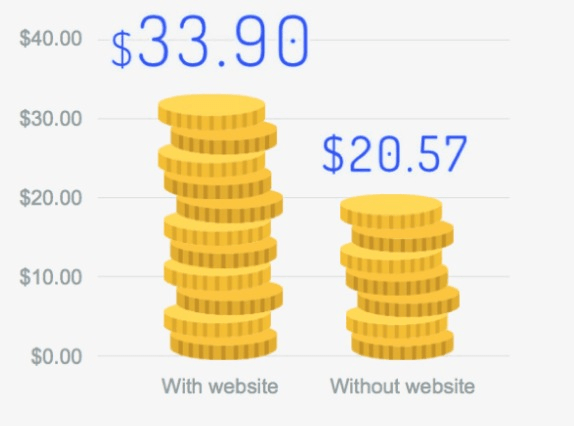
You’ve heard all these myths about freelancing before…
(Disclaimer: this isn’t just another story about the freedom of freelancing, so let that bee in your bonnet go make some honey.)
Imagine you’ve just booked a two-week luxury cruise to Fiji.
You call your neighbor to ask if she’ll water your hydrangeas while you’re off enjoying complimentary massages from a woman whose name sounds like an exotic flower.
Recalling all the times you’ve listened to her brag about her seasonal soups and organic soap making, you decide not to feel bad about dishing out all the tropical details.
But before you can even get to the Welcome Mojitos she clears her throat and says:
Do you think this whole “cruise-thing” is a good idea? You know the world is flat, don’t you? Aren’t you afraid you’ll fall off the edge?
Now, I think we can all agree what you’d do next, right?
Hang up.
Hang up and call someone else about watering the hydrangeas.
Because you’re a rational being and ain’t nobody got time for that kind of crazy.
So why is it so hard to spot such malarkey when it comes to the topic of freelancing?
Probably because, like many of us, you’re just waking up to the Big Change. The shift from traditional jobs to a freelance economy.
Think jobpocalypse.
And it’s always easier to spot half-baked beliefs with the aid hindsight.
Remember Hammer pants? Or acid washed jeans? People believed those were cool once.
With this in mind, we’re going to dig into a few myths about freelancing.
So you can broaden your horizons. Make some money.
And maybe, just maybe, squeeze in a cruise or two.
Myth #1: The Gig Economy Is Already Saturated
Unless you’ve been living under a rock for the last few years, you’ve probably heard the stats:
- 35% of the American workforce is already freelancing
- 65 million Americans work from home
- 43% of Americans will freelance by 2020
With freelancers flooding the market every year, it might seem that following the crowd will only leave you in a packed market fighting over scraps.
But here’s the truth. Freelancing isn’t just a trend. It’s the future.

More and more companies are hiring freelancers over full-time employees.
They’ve realized the money they can save on things like office space and health care. But cost-cutting isn’t the only force driving this change. According to Forbes, a recent study by Ardent Partners uncovered other big changes:
- 63% of businesses are rethinking how workflow is handled
- 67% are hiring more “senior candidates” for contract roles
- 65% are recruiting millennials for new skill sets
- 61% are adopting a company-wide “agile talent” strategy
The same report found that more and more businesses are using platforms like Upwork, or personally contacting individual freelancers through other online communities.
Even if you prefer a steady 9-5, the idea of job security is a total myth.
And if you’re still not convinced, CNBC reports that the number of gig economy workers has increased by 27 percent more than payroll employees over the last 20 years.
Will your boss hand you a pink slip tomorrow? Probably not. Are traditional jobs done? No.
Is there growing demand for skilled freelance workers? You bet.
Myth #2: You have to be an expert
Nobody pays for beginners.
At least that’s what you thought before you saw this graph from The Anatomy of A Successful Freelancer:

Did you see how many freelancers are self taught?
There’s no doubt that there are a lot of snake-oil salesmen out there peddling the idea that anyone can become a freelancer and make a whopping $100,000/year.
This is false.
Of course you need skills.
But do you have to be an expert to start making money? No.
Besides, you’re not “just anyone.”
Here’s what Just Anyone does to kick-off his freelancing business…
He slaps together a profile on a popular freelancing platform he read about in blog post called, “How I Made $5,000/month Traveling Thailand.”
He includes all the standard fool’s gold nuggets every other freelancer digs up when they Google, “How to Make A Profile Online.”
After that, he whips together a proposal and sends it out to 20 or 30 job postings. Then, he waits for the moola to roll in so he can swim in it like Scrooge McDuck. And?
Crickets.
Or, even worse, he hears from a client who is totally happy to hire him…at $5 per hour.
It doesn’t matter if you’re a beginner or experienced:
If you want to stand out in the crowded marketplace you’ve got to….stand out.
The Wildebeests of the freelancing world think this means talking up their experience.
The Wildebeests say things like:
I’m an experienced professional web designer.
Or
I have extensive experience in the corporate sector.
Blech.
Would you want to spend a day reading profiles and proposals like that?
Don’t be a Wildebeest.
Unless you’re a heart surgeon employers aren’t all that interested in your experience level.
They want to know one thing and one thing only:
Can you solve their problem?
Put twenty high earning freelancers from all different industries in a room and you know what they’ll all have in common?
They’re all creative problem-solvers.
They’ve researched what people in their field need help with, taken an honest inventory of their own skills, and strategically positioned themselves to attract the exact clients they can help.
They’ve found their freelancing ninja-superpower.

Are they chilling with Oprah and Deepak Chopra? Or rubbing shoulders with the Michael Hyatt’s of their industry?
Probably not.
Have they been published in prestigious journals within their industry?
Nope.
Have they found a niche that needs their help and honed their skills to serve it?
Absolutely.
Business don’t pay people to be experts. They pay them to make their life easier, more productive, or less stressful.
I’m not saying you should adopt a Ferris Bueller attitude of “fake it til’ you make it”.
You absolutely have to be able to do the work.
But having no experience isn’t the same as not being able to do the job.
If you’re a beginner–or even if you’ve got tons of experience, but are just starting to freelance–what you need is a clear plan for attracting the right clients and getting them to quickly know, like, and trust you.
Myth #3: Only Programmers and IT Experts Can Make Money
I shied away from freelancing for years, stuck in a teaching job I enjoyed about as much as the shrill of a dentist’s drill.
Because I thought writers were starving artists who churned out blog posts at $3 a pop by day. And drank boxed wine while writing their manuscript by night.
In hindsight, this was right up there with believing that 4 out of 5 doctors recommend Camels.
Take a look at this graph from Hubstaff’s report on freelancing trends for 2017:

Freelancing isn’t just for web designers and writers.
And it’s not just tech-gurus who are getting fat on all the guacamole (moola).
If you can find a need and strategically position yourself to fill it, then you’re on your way to commanding top dollar rates in your industry.
And the even better news?
Today’s technology makes doing this easier than ever. Not only are more businesses actively seeking out freelancers, but also those freelancers have more resources at their disposal than ever before.
Maybe you’re a teacher and reading this thinking, “I’d love to quit my job and work from home in my pajama pants. But I don’t have any special skills.”
Wrong.
Do yourself a favor and head on over to this Forbes article, which follows several music teachers who’ve built a comfortable income stream teaching students using an online platform called Lessonface.
I’ll say it again: success lies in finding your freelancing superpower.
And leveraging it to attract high quality clients.
Myth #4: You Have To Have A Fancy Website
Websites aren’t like flypaper.
You can’t just hang ‘em up in cyberspace and expect clients to come buzzing your way.
Sure, in the long run, you can use SEO and content marketing strategies to make yourself more visible. But these things take time. And money. And patience, young Jedi.
I’ve seen friends spend months on their websites–not to mention boatloads of money they don’t have either hiring designers or paying for DIY courses–waiting to find clients until everything is perfect. And when they finally launch this precious little piece of online real estate?
No one comes to the Open House. Not even. A single. Fly.
Take a look at this graph from Hubstaff’s 2017 Report on freelancing:

Yes, freelancers with websites make more money.
But freelancers without websites? They still make money.
Don’t scrap the whole idea of having something up on the interwebs.
Just don’t wait to launch your business until you’ve got a fancy new website.
Adopt the Food Truck mentality: quick and easy. Then build as you grow.
Sites like Squarespace and Wix are cheap and don’t require much technical wizardry, so you can get started quickly.
Food truck style freelancing also lets you get to know who you’re serving, so you can tweak your offerings to suit their tastes.
Myth #5: There Aren’t Any High-Quality Clients Out There
A lot of freelancers think high-quality clients are like steak tartare: too rare for their liking.
I’m not saying there aren’t bad clients out there. Swing a cat in any freelancing forum and you’ll hit a horror story. In fact, the Freelancers Union reports that employers stiff the average freelancer $6,000 a year.
But dig into these horror stories and you’re likely to find some common themes:
- Undervaluing one’s skills (not getting paid what you’re worth)
- Over-promising and under-delivering
- Sticking with a bad client because you think you don’t have a choice
Bad clients aren’t a rite of passage.
So how do you avoid them?
Think of successful freelancers as the Hyatt Hotels of the gig economy.
They strategically attract clients who pay top dollar for the experience of working with them.
They don’t just do the job well. They make working with them feel like walking into a 5-star hotel.
And good clients pay you what you’re worth.
They rarely haggle over price like you’re in Shanghai street market.
If you’re stuck in a race to the bottom with rates and clients, then you aren’t conveying your value adequately. And I strongly recommend you reread Myth #2.
Myth #6: You Have To Have A Huge Portfolio
Your portfolio isn’t like Costco. More isn’t better.
The key to a great portfolio is having the right pieces.
How do you know what the right pieces are?
You put on your Sherlock Holmes hat and do some snooping around. (Not in a creepy way.)
- Check out job posts you’re interested in on sites like Upwork.
- Research individual companies you think are doing something cool and worthwhile.
- Take a peek at job listings on LinkedIn.
- Read Amazon reviews for books in your subject area.
- Sift through online forums in your industry and see what people are complaining about.
Ask yourself:
- What drives people crazy, makes them mad, or stresses them out?
- How can I make their lives easier?
If you’re a photographer, what are people’s biggest complaints about hiring a photographer?
A teacher? What are busy moms and dads want most for their kids’ education?
A recent graduate? What do busy business owners wish they could have more time for?
Find what people need. Then, SHOW them you can help them.
Okay, let’s give your eyes a break here and do some visualisation.
Don’t worry, I’m not going to trick you into meditating.
Imagine you’re wildly successful in the area that interests you most (space travel, scrapbooking, or scouting out hipster coffee shops).
Now, picture yourself at your desk, up to your eyeballs in paperwork.
You just realize that you’ve double booked your 5 o’clock. And you’ve got your 4-year-old’s ballet recital tonight. And your golden-doodle, Barkus, threw up on the carpet this morning.
Just when you think you’re going to ninja-walk out of the office and catch the redeye to Santa Fe–BING–you get an email. The subject line captures your attention, so you click through.
And inside, you find someone who can solve the exact problem you thought you could never solve on your own.
This person must be some kind of angel, you think.
Maybe the world isn’t out to get you. Smiling, you hit Reply and type the following:
You’re Hired. Name your price.
Myth #7: You Have To Do Free Work To Build A Portfolio
Reread Myth #6. Then use your samples to find paid work.
Myth #8: You won’t have time to do anything else.
See Myth #9.
Myth #9: You Can’t Make A Living Freelancing
Here’s the thing I wish someone had told me early on in my freelancing career. If I had any talent, I’d cross-stitch it onto a pillow. As a freelancer:
You’re not an employee.
Your client is not your boss.
You are both the boss and the employee.
And your client is your customer.
The sooner you can get out of the Employee Mindset, the sooner you’ll start succeeding as a freelancer.
You might be surprised to hear that businesses struggle to find good freelancers.
To you, the word “freelancer” may conjure images of sipping coffee in your pajamas at 10 a.m. while you look over your latest project.
But clients?
Say “freelancer” and they’re having flashbacks to the time in high school when they volunteered at local kindergarten and were almost eaten alive by a pack of crayon wielding six-year-olds.
But, like I said before, you’re not going to be just another fly-by-the-seat-of-my-pants freelancer.
You’re aiming to be a talented, compassionate, business owner.
And you’re on a mission to serve your clients like the no-pants-wearing professional you’ve always wanted to be.
This actually makes you a total catch.
There are literally millions of people out there earning 2x their previous salaries working from home.
And all it takes is a couple of good clients.
As you build your business, and get a better handle on what your clients want and need you can start to offer service packages, or paid content that give you the holy grail of freelancing:
Passive income.
This is what every freelancer should be aiming for.
If you’re hanging around on Upwork, landing a gig here or there, you’re not freelancing.
You’re fishing.
Upwork is a great place to start, and there are people who do make a living off it. But these are rare cases. Most people use it as just another source of income.
Instead of fishing, you’re going to build a killer business where clients come to you.
Myth #10: Freelancers Have To Be Hustlers
I once spent an evening listening to a friend of mine describe her experience working as a junior associate at a prestigious law firm in San Francisco.
Over a plate of nachos, she lamented her long hours. As we worked through our chicken burritos, she described colleagues who slept in their office and lived off Lipton Cup-A-Soup’s.
Finally, as I slurped the dregs of my fourth margarita, she finished her tale with a flourish:
“And last week, I had to buy underwear from a vending machine! A vending machine!”
That’s when I realized she hadn’t been complaining. She’d been bragging.
Listen, if you want to work until your fingernails fall off, go right ahead.
But you should also know that #hustler isn’t required to build a profitable freelance business.
The key is to build a business that fits into your life. Not the other way around.
Is Freelancing Right For You?
According to the last Socratic meme I saw, “To know thyself is the beginning of wisdom.”
Ultimately, only you can decide if it’s right for you. But if you’re still reading this, then my guess is that you’re doing more than just entertaining the idea of leaving your J.O.B.
And you deserve to give yourself permission to fully explore this world of freelancing.
Starting isn’t nearly as hard as you might think, even you’re thinking:
- I don’t have an idea.
- I don’t have a network.
- I could never market myself.
All you need is your unique skill set and a system for attracting clients who need you.
Who knows?
Maybe by next year you’ll be calling your neighbor to ask if she can water your hydrangeas while you’re off sailing the Pacific.













